Indoor plants bring life, beauty, and freshness into our homes, but many plant enthusiasts unknowingly face one common issue that silently damages their beloved greens—salt build-up in plant pots. You may have seen white crusty deposits forming on the surface of the soil, around the rim of pots, or near the drainage holes. That’s excess salt, and while it may seem harmless, over time it can cause serious harm to your plants’ roots and overall health.
In this comprehensive guide, we’ll explore what causes salt build-up, how it affects plants, and the most effective ways to prevent and treat it—ensuring your indoor garden thrives beautifully year-round.
1. Understanding Salt Build-Up: What It Is and Why It Happens
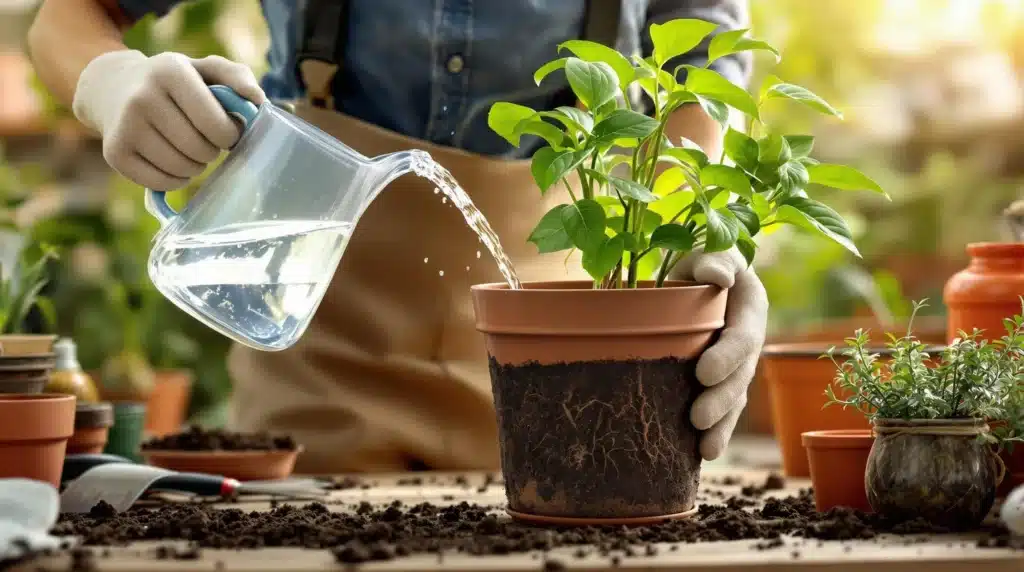
Salt build-up refers to the accumulation of mineral salts in the potting soil. These salts come primarily from fertilizers, tap water, and sometimes from the potting mix itself. When water evaporates or plants take up moisture, salts remain behind and gradually accumulate in the soil.
Main causes of salt build-up include:
- Over-fertilization: Using too much chemical or synthetic fertilizer adds an excess of mineral salts that plants can’t absorb quickly.
- Hard tap water: Many regions have water rich in calcium, magnesium, or sodium, which can accumulate over time.
- Poor drainage: When pots lack proper drainage, water doesn’t flush out excess salts, causing them to stay trapped in the soil.
- Evaporation: As water evaporates from the top of the soil, salts are drawn upward, forming white crusts on the surface.
Though salts are essential in small amounts, high concentrations can be toxic to plants—making it crucial to understand how to prevent them.
2. How Salt Build-Up Affects Indoor Plants
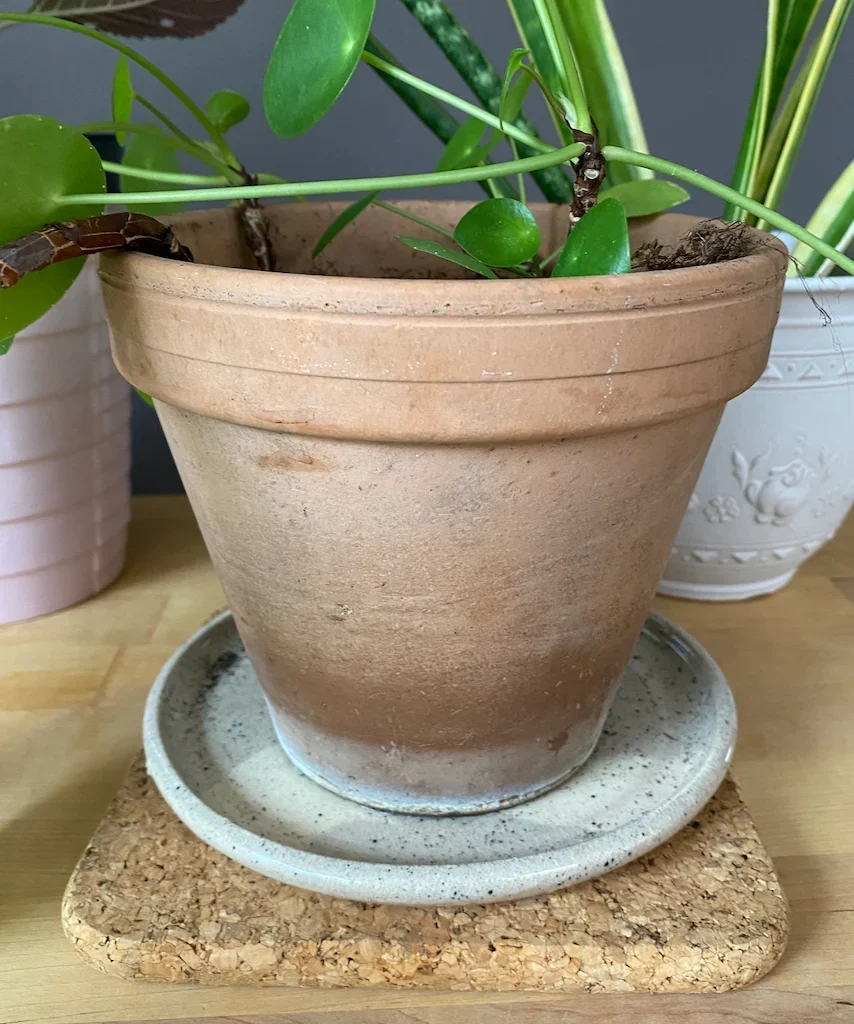
Excess salts in the soil disrupt the delicate balance of water and nutrients that roots need to function properly. Here’s how salt accumulation harms your plants:
- Root burn: Excess salts draw moisture away from roots through osmosis, causing dehydration and root damage.
- Nutrient lockout: High salt concentrations interfere with the plant’s ability to absorb essential nutrients like nitrogen, potassium, and magnesium.
- Stunted growth: Over time, salt-stressed plants grow slowly, develop weak stems, and may produce fewer leaves.
- Leaf damage: Symptoms often appear as brown, crispy leaf tips or yellowing edges—especially in plants like peace lilies, dracaenas, and spider plants.
- Soil compaction: Salt build-up can alter soil structure, making it less porous and reducing aeration.
If ignored, salt build-up can eventually kill indoor plants by suffocating roots and disrupting essential nutrient cycles.
3. Identifying Salt Build-Up: Key Signs to Watch For
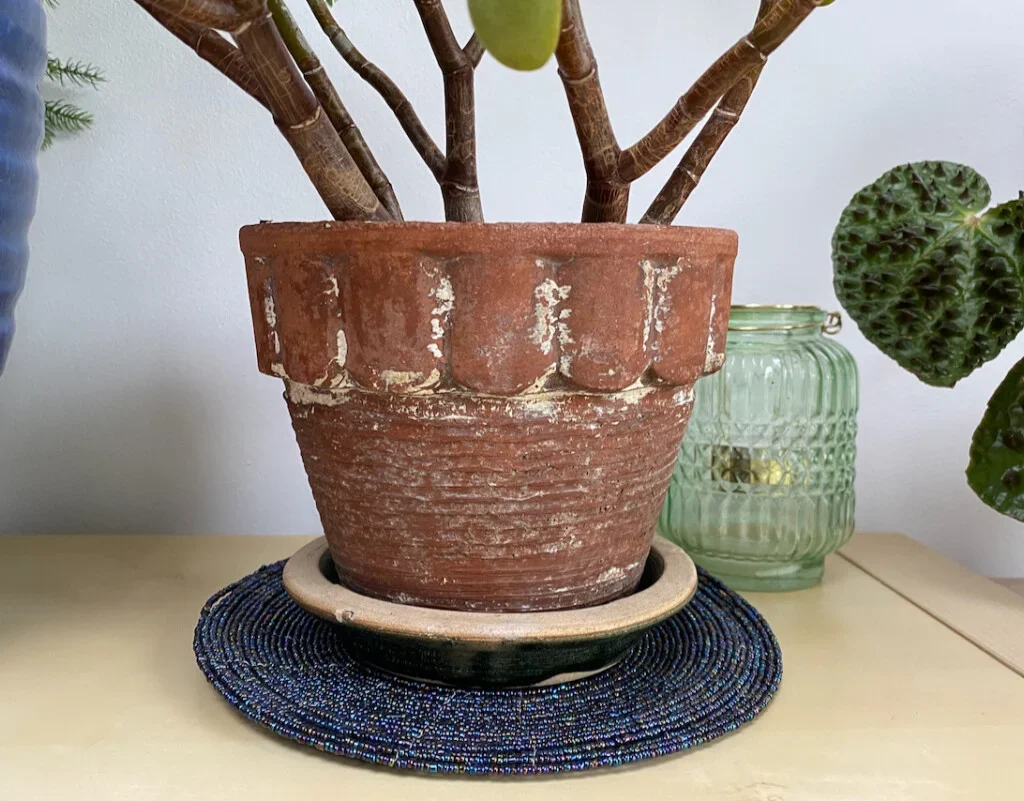
To prevent damage, it’s essential to spot the early warning signs. Here’s how to identify salt build-up in your plant pots:
- White crusts or powder: A visible layer on the soil surface or pot edges.
- Discolored leaves: Brown or yellow leaf tips and edges are common symptoms of salt stress.
- Wilting despite moist soil: Indicates the roots are struggling to take up water due to salt concentration.
- Hard, compacted soil: The top layer feels crusty or resists water absorption.
- Reduced plant growth: Plants stop producing new leaves or seem dull even with regular care.
Spotting these early signs allows you to take corrective steps before irreversible damage occurs.
4. How to Prevent Salt Build-Up in Indoor Plant Pots
Preventing salt accumulation is much easier than treating it. By adopting the following habits, you can maintain healthy, salt-free soil for your indoor plants.
a. Use the Right Type of Water
Tap water often contains dissolved minerals that contribute to salt accumulation. Instead, use:
- Filtered water or distilled water, which contains fewer mineral salts.
- Rainwater, which is naturally soft and ideal for most indoor plants.
If you must use tap water, allow it to sit uncovered overnight. This helps chlorine evaporate and reduces some hardness before watering your plants.
b. Avoid Over-Fertilizing
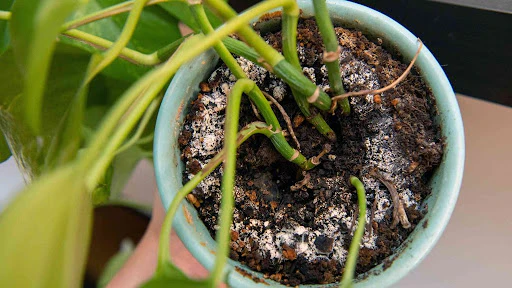
One of the leading causes of salt build-up is over-fertilization. Always follow fertilizer label directions and dilute more than recommended for indoor use.
Best practices:
- Fertilize only during the active growing season (spring and summer).
- Avoid fertilizing during winter when plant growth slows.
- Use organic or slow-release fertilizers—they release nutrients gradually and reduce salt accumulation.
- Flush the soil regularly to remove residual salts (explained below).
Remember: it’s better to under-fertilize than to overdo it.
c. Ensure Proper Drainage
Good drainage is vital for leaching out excess salts. Always use pots with drainage holes at the bottom, and never let your plants sit in standing water.
Tips:
- Add a layer of pebbles or coarse sand at the pot’s base for better drainage.
- Empty the saucer under your pot after each watering session to prevent reabsorption of salty water.
- Use well-aerated potting soil that drains easily, such as mixes with perlite, coco coir, or bark.
d. Leach the Soil Regularly
Leaching means flushing the soil thoroughly with water to wash away accumulated salts. This should be done every few months or when signs of salt build-up appear.
Steps to leach soil:
- Place the plant in a sink or outdoors.
- Slowly pour clean, room-temperature water through the soil until it drains freely.
- Use at least twice the volume of the pot in water to ensure salts are flushed out.
- Let the pot drain completely before returning it to its saucer.
Repeat this every 2–3 months for best results.
e. Repot Plants Periodically
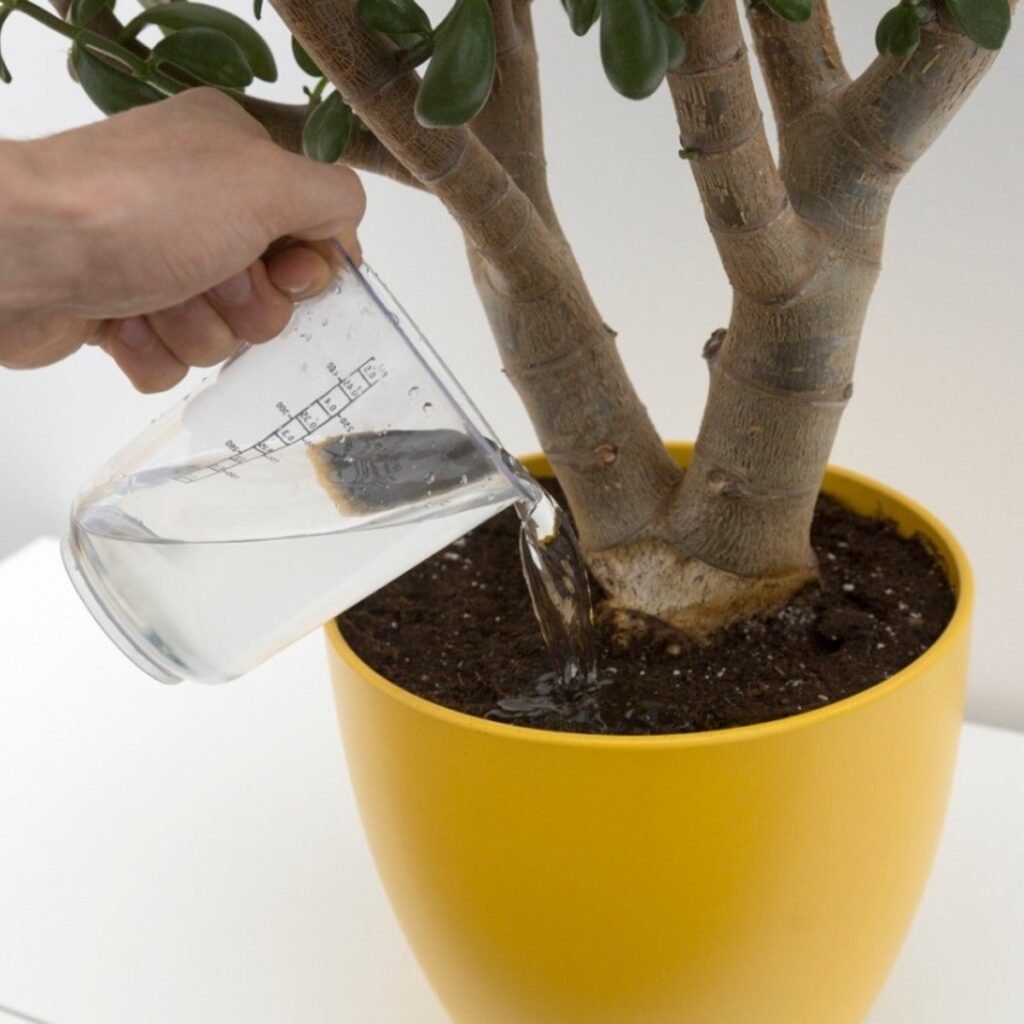
Even with good care, some salts will accumulate over time. Repotting every 12–18 months gives your plants a fresh start with nutrient-rich, salt-free soil.
How to repot correctly:
- Gently remove the plant from the pot and shake off old soil.
- Trim damaged or salt-burned roots.
- Clean the pot thoroughly or use a new one.
- Refill with fresh potting mix suitable for the plant species.
- Water lightly and place in indirect light for a few days to help the plant recover.
This refreshes both the plant and soil, improving drainage and nutrient balance.
f. Clean Pot Surfaces
Salt deposits often appear on the rim or outer surface of pots. Regularly cleaning these prevents salts from re-entering the soil.
To clean:
- Wipe the pot with a soft cloth soaked in a vinegar-water solution (1:1 ratio).
- Rinse thoroughly with plain water and dry before refilling.
For terracotta or clay pots, soak them in vinegar water for a few hours, scrub gently, and rinse before reusing.
g. Choose the Right Potting Mix
Using the correct potting mix ensures salts don’t accumulate easily. Avoid heavy garden soil, which traps minerals and water. Instead, use light, well-draining potting media that allow easy leaching.
Ideal potting mix components include:
- Coco coir or peat moss (for moisture balance)
- Perlite or vermiculite (for aeration)
- Compost (for nutrients)
- Bark chips (to maintain structure)
This combination prevents salt build-up and supports root health.
5. Natural Remedies to Neutralize Salt Build-Up
If salt has already accumulated, you can use gentle, natural methods to restore soil health:
- Vinegar rinse: Mix 1 tablespoon of white vinegar in 1 liter of water. Use this to flush the soil occasionally—it helps dissolve mineral residues.
- Soil replacement: Replace the top 1–2 inches of soil with fresh mix every few months.
- Activated charcoal: Add a thin layer to the pot base—it absorbs impurities and improves air circulation.
- Epsom salt caution: Some gardeners use Epsom salts, but avoid frequent use—they add more magnesium and sulfur, worsening build-up if overused.
6. How to Save a Plant Damaged by Salt Build-Up
If your plant shows signs of severe salt stress (crispy leaves, poor growth), don’t lose hope. Follow these steps:
- Flush the soil thoroughly to remove salts.
- Trim damaged leaves and roots.
- Repot in fresh soil if symptoms persist.
- Reduce fertilizer use and water with filtered or rainwater.
- Mist foliage lightly to help with hydration (avoid wetting leaves too often in humid environments).
Within a few weeks, you’ll notice your plant bouncing back with new, healthy growth.
7. Long-Term Tips for Healthy, Salt-Free Indoor Plants
- Use soft water whenever possible.
- Follow a consistent watering routine—deep watering but less frequently encourages healthy roots.
- Rotate fertilizers between organic compost teas or seaweed extracts to avoid chemical salt overload.
- Keep an eye on pot rims and soil surface for white crusts.
- Refresh or replace potting soil every 12–18 months.
Maintaining these habits ensures long-term health and vibrant foliage for your indoor plants.
Conclusion
Preventing salt build-up in indoor plant pots is one of the simplest yet most powerful ways to maintain thriving houseplants. Understanding the causes—like over-fertilization, poor drainage, and hard water—and taking preventive measures such as regular leaching, proper watering, and periodic repotting will keep your plants healthy from root to leaf.
By caring for the soil beneath your plants, you’re nurturing the very foundation of their growth. With the right attention, your indoor garden will remain lush, green, and full of life—free from the silent stress of salt build-up.
So the next time you water your plants, remember: a little care today prevents a lot of damage tomorrow.
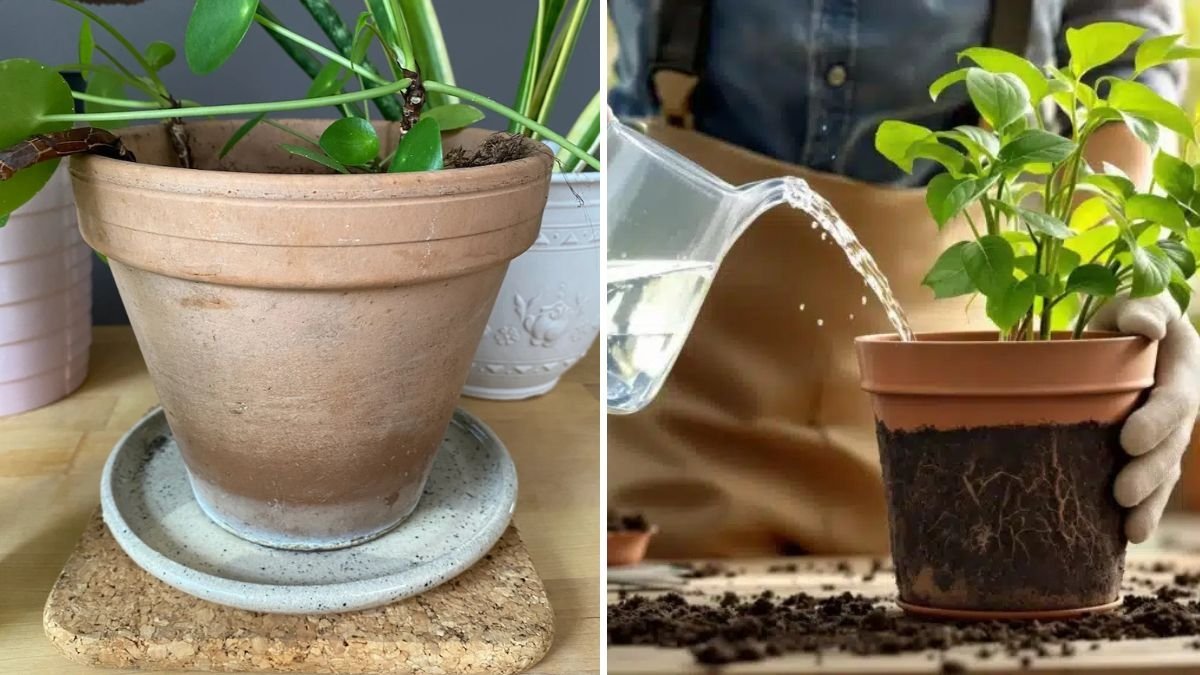




Leave A Comment